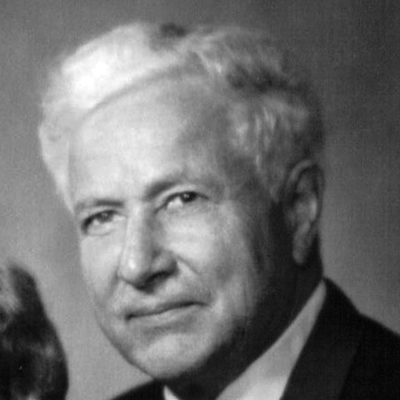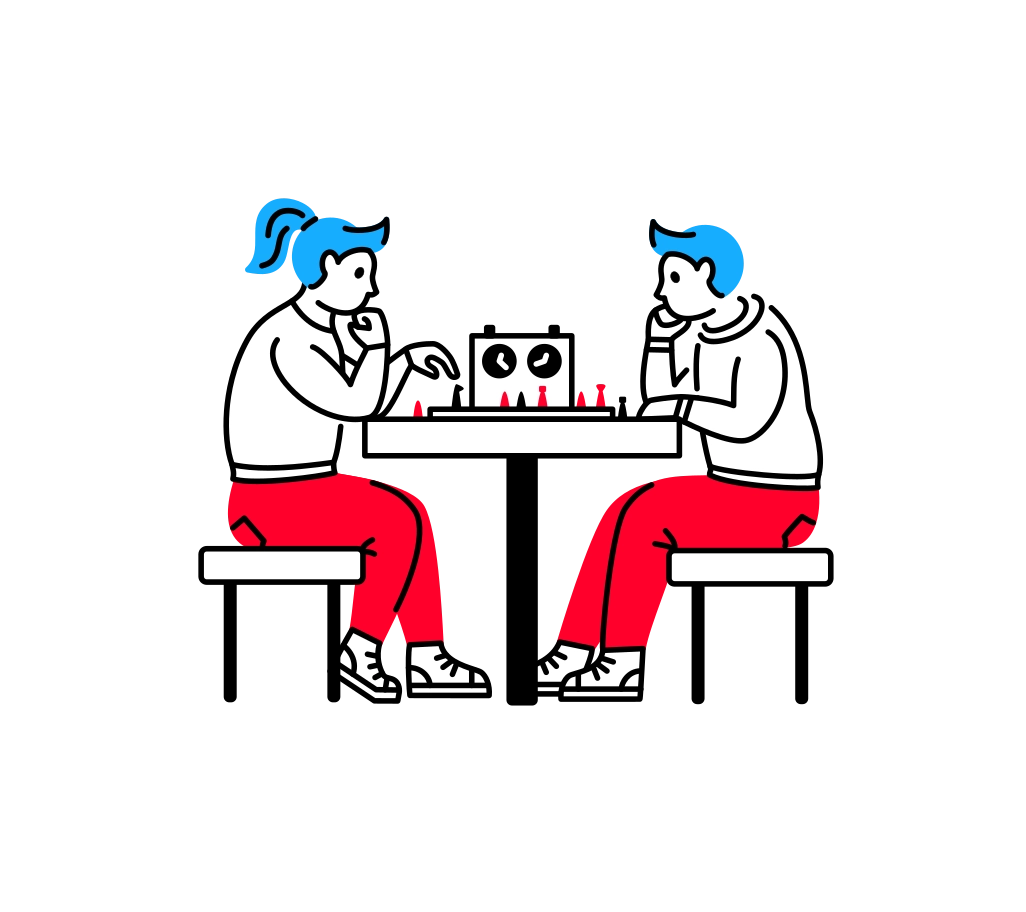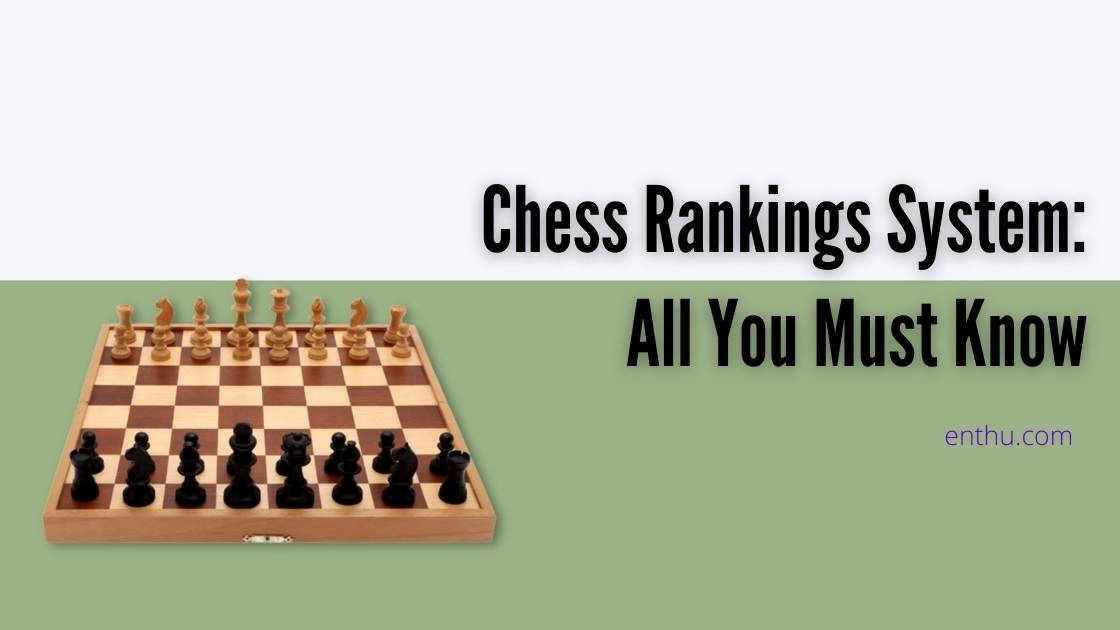Chess Ranking is a crucial factor in your journey to becoming a grandmaster. Fun fact: Chess players earn the grandmaster title once they reach a 2500 Elo rating! But you probably already knew that and have been working towards this goal for a long time.
No matter how long you've been on this path, mastering chess isn’t easy—it demands a deep understanding of tactics, theory, and more. However, to truly boost your rating, you need a solid grasp of the chess ranking system. This knowledge will help you advance strategically in your chess career. Let’s dive in!
Chess Rankings System | What is it?
The chess ranking system provides overall scores to every chess player based on their performance in chess games/tournaments. This score tracks the progress as a chess player.
Organizations such as FIDE (International Chess Federation) and the USCF (US Chess Federation) follow various ranking systems to rank chess players fairly. Not to forget, titles like Grandmaster (GM), FIDE master, and International Grandmaster (IM) are bestowed based on players’ ratings/ranking.
Since the birth of the International Chess Federation in 1924, the chess world has seen several ranking systems. From the Ingo System to ELO rating, there were many systems to calculate the rankings of chess players. But, the most popular (and used) ranking system is the ELO rating system. To learn more about this system, keep reading ahead.
1. History of Chess Ranking System | A Timeline
The Harkness System
Inventor: Kenneth Harkness
First published in 1942, Chess Review
The Harkness ranking system was the first worldwide recognized ranking system in chess. The USCF followed the Harkness system to rate players from 1950 to 1960. Later, the British Chess Federation adapted it and continued with it till 1967.
2. The Ingo System
Inventor: Anton Hoesslinger
First published in 1948
The West German Chess Federation used the Ingo system from 1948 to 1992.
3. The ECF Grading System
Inventor: Richard W. B. Clarke
First published in 1958
The English Chess Federation used the ECF Grading system till 2020. They updated the grades every six months.
The ELO System
Inventor: Arpad Elo
First published in 1961, Chess Life
The USCF adopted the ELO system in 1961, followed by FIDE in 1970. Bobby Fischer was the first chess player to top the ELO rating.
Other than chess, outdoor sports such as football and baseball, Scrabble-like board games, and online games like PUBG follow this system.
4. The Glico System
Inventor: Mark Glickman
First published in 1995
Glickman created the Glico system as an improved variation of the already popular ELO ranking system. Besides the Australian Chess Federation, it is mostly used by online chess-playing platforms, such as Chess.com and other free internet chess servers.

Lichess.org uses the last version of this system–Glicko 2.
5. Chessmetrics
Inventor: Jeff Sonas

Like Glicko, Chessmetrics is another evolved version of the ELO system invented by Jeff Sonas.
6. ELO Rating System

The inverter of this rating system, was a chess player and a member of the USCF. The foundation assigned him the job to head the committee of examining rating systems (in 1959) and making recommendations accordingly.
As mentioned above, Arpad Elo finished the system in 1961, which was named after him (as you can guess). The USCF incorporated the rating system in 1961. And, FIDE soon followed the same path.
7. How Does it Work?
The ELO rating system doesn’t rate a player solely based on their performance. On the contrary, chess players' score depend on their number of wins, losses, and draws. In addition to that, there’s another twist. While your score depends on the result of the game, it can also vary depending on your enemy’s existing rating.
In other words, if your enemy’s rating is 100 points more than you, you’re likely to get a higher score after the game. But, if the difference in the ratings is less, your score will be comparatively less. In ELO rating, the winner takes points from the loser. Let me explain how it works exactly. Suppose there are two players playing a game. One of them is a higher-rated player, and another is lower-rated. Now, let’s see how they get scores.
Result of the Game | Rating |
Higher-rated player wins | Lower-rated player loses a few points |
Lower-rated player wins | Higher-rated players loses a lot of points |
Draw | Lower-rated player gains a few points from the higher-rated player A chess player’s final rating is taken into account before the game. He/she is likely to win or lose a minimum of 30 points. |
A chess player’s final rating is taken into account before the game. He/she is likely to win or lose a minimum of 30 points.


Conclusion
Chess rankings system is one of the most complicated topics when learning chess. Besides being a confusing arena, it’s almost mind-boggling to many. If the above information feels too much to you, I suggest understanding the ELO rating system at the least. Also, if you’re an avid online player, I would rather suggest you go with Glicko 1 & 2. With this, I bid you farewell. Until next time!
FAQs
1) How good is a 1000 rating in chess?
A rating of 1000 means you’re still in the beginner’s level. On reaching 1.5k+, you will be considered as a strong player at local chess clubs. Only after crossing the 2000+ mark, you’re ready to play in international tournaments.
2) What does ELO stand for?
Even though ELO or Elo is mostly written in caps, it’s not an abbreviation. It refers to a rating system–ELO rating system, which was invented by Arpad Elo. So, ELO doesn’t stand for anything. It’s the name of the inventor of the ELO rating system.
3) Does chess increase IQ?
Even though highly-rated chess players have more than average IQ, there’s no proper study that says that chess increases IQ. FYI, Magnus Carlsen’s IQ is around 190 and Judith Polgar’s is 170.


Comments